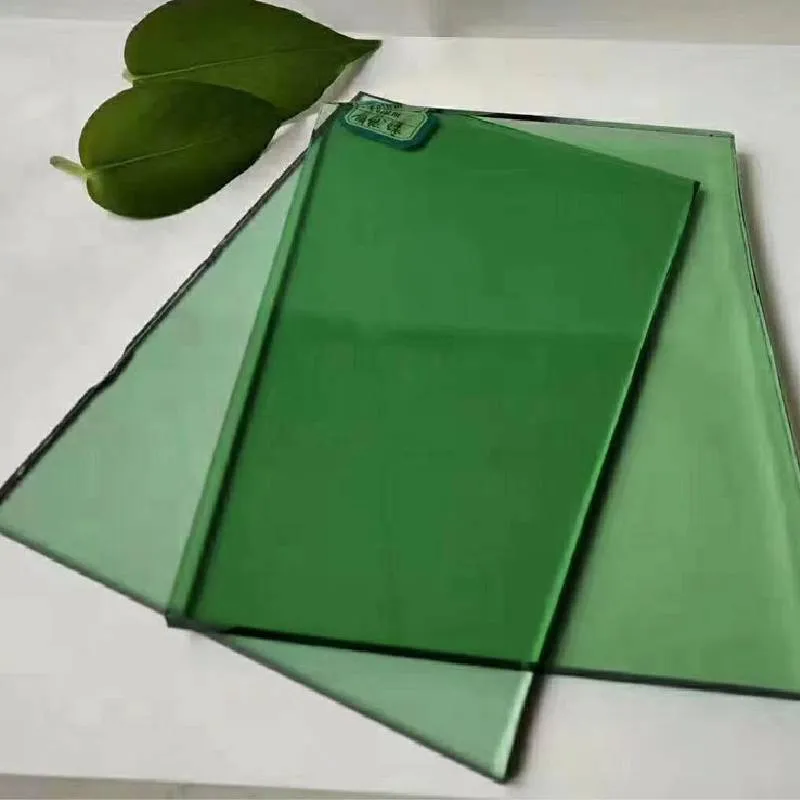The Allure of Textured Ribbed Glass A Timeless Design Element
In the world of design and architecture, materials play a pivotal role in shaping ambiance and evoking emotions. One such material that has gained significant popularity in recent years is textured ribbed glass. This unique form of glass not only enhances the aesthetic appeal of a space but also serves practical functions, making it a versatile choice for both residential and commercial settings.
Aesthetics and Versatility
Textured ribbed glass is characterized by its distinctive wavy surface pattern, which can vary from subtly undulating lines to pronounced grooves. This texturing creates a play of light and shadow that transforms the otherwise mundane transparency of glass into a captivating visual feature. The ribbed surface refracts light in intriguing ways, casting patterns that dance on surrounding walls and floors. Whether used as a partition in a modern office, a shower door in a chic bathroom, or an accent in a minimalist kitchen, the visual depth and tactile quality of ribbed glass add dimension and sophistication to any design.
Practical Benefits
Beyond its striking looks, textured ribbed glass offers practical advantages that further enhance its appeal. One of the key benefits is its ability to obscure visibility while allowing light to filter through. This makes it an excellent choice for spaces where privacy is desired without sacrificing brightness. For instance, in a bathroom, ribbed glass can be used in windows or shower enclosures to provide the necessary privacy without the need for heavy curtains or blinds. Similarly, in office environments, it can serve as a stylish way to partition spaces without completely isolating them, fostering a sense of openness while delineating areas for work and collaboration.
textured ribbed glass
Furthermore, ribbed glass can also assist in controlling temperature and energy efficiency. The texture can create an insulating effect, helping to moderate indoor temperatures and reduce energy costs. This aspect not only makes it an environmentally friendly option but also appeals to those seeking to create sustainable living spaces.
Cultural and Historical Significance
Textured ribbed glass has a rich history that dates back to the 19th century, particularly within the Art Deco and Mid-century Modern movements. Architects and designers embraced it for its ability to blend functionality with artistry. The material became a hallmark of industrial-style design, often seen in older commercial buildings, factories, and even train stations. Today, the resurgence of vintage and retro design aesthetics has led to a renewed interest in ribbed glass. Its historical significance is not just a nod to the past but also a celebration of craftsmanship that continues to influence contemporary design.
Conclusion
The charm of textured ribbed glass lies in its ability to marry beauty with utility. As modern design continues to evolve, materials like ribbed glass remain timeless, offering a bridge between functionality and aesthetic appeal. Whether employed in residential or commercial contexts, it fosters an atmosphere of elegance while providing practical benefits that are essential in today’s fast-paced world.
Incorporating textured ribbed glass into design schemes is not just a stylistic choice; it is a statement about the value of thoughtful materials that enhance our environments. As we look towards the future of design, one thing remains clear textured ribbed glass stands as a testament to enduring beauty that will continue to shape spaces for generations to come.
 Afrikaans
Afrikaans  Albanian
Albanian  Amharic
Amharic  Arabic
Arabic  Armenian
Armenian  Azerbaijani
Azerbaijani  Basque
Basque  Belarusian
Belarusian  Bengali
Bengali  Bosnian
Bosnian  Bulgarian
Bulgarian  Catalan
Catalan  Cebuano
Cebuano  Corsican
Corsican  Croatian
Croatian  Czech
Czech  Danish
Danish  Dutch
Dutch  English
English  Esperanto
Esperanto  Estonian
Estonian  Finnish
Finnish  French
French  Frisian
Frisian  Galician
Galician  Georgian
Georgian  German
German  Greek
Greek  Gujarati
Gujarati  Haitian Creole
Haitian Creole  hausa
hausa  hawaiian
hawaiian  Hebrew
Hebrew  Hindi
Hindi  Miao
Miao  Hungarian
Hungarian  Icelandic
Icelandic  igbo
igbo  Indonesian
Indonesian  irish
irish  Italian
Italian  Japanese
Japanese  Javanese
Javanese  Kannada
Kannada  kazakh
kazakh  Khmer
Khmer  Rwandese
Rwandese  Korean
Korean  Kurdish
Kurdish  Kyrgyz
Kyrgyz  Lao
Lao  Latin
Latin  Latvian
Latvian  Lithuanian
Lithuanian  Luxembourgish
Luxembourgish  Macedonian
Macedonian  Malgashi
Malgashi  Malay
Malay  Malayalam
Malayalam  Maltese
Maltese  Maori
Maori  Marathi
Marathi  Mongolian
Mongolian  Myanmar
Myanmar  Nepali
Nepali  Norwegian
Norwegian  Norwegian
Norwegian  Occitan
Occitan  Pashto
Pashto  Persian
Persian  Polish
Polish  Portuguese
Portuguese  Punjabi
Punjabi  Romanian
Romanian  Russian
Russian  Samoan
Samoan  Scottish Gaelic
Scottish Gaelic  Serbian
Serbian  Sesotho
Sesotho  Shona
Shona  Sindhi
Sindhi  Sinhala
Sinhala  Slovak
Slovak  Slovenian
Slovenian  Somali
Somali  Spanish
Spanish  Sundanese
Sundanese  Swahili
Swahili  Swedish
Swedish  Tagalog
Tagalog  Tajik
Tajik  Tamil
Tamil  Tatar
Tatar  Telugu
Telugu  Thai
Thai  Turkish
Turkish  Turkmen
Turkmen  Ukrainian
Ukrainian  Urdu
Urdu  Uighur
Uighur  Uzbek
Uzbek  Vietnamese
Vietnamese  Welsh
Welsh  Bantu
Bantu  Yiddish
Yiddish  Yoruba
Yoruba  Zulu
Zulu 

